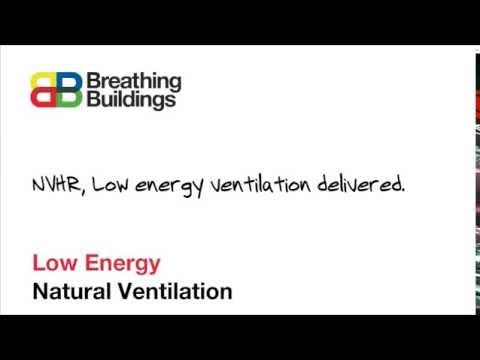FAQs – Control
How are the systems controlled?
The system is automatically controlled based on internal temperature and CO2 and external temperature. User control is minimal, an on/off/test switch which is usually always kept in the on position except for maintenance. If low-level windows are manually operated then a blue/red LED indicator provides guidance as to when to open and close the windows, but the users still have control.
The e-stack roof based system operates a Summer/Winter mode driven by an outside air temperature threshold, switching automatically between upwards displacement ventilation and mixing ventilation.
Can I change the set points?
Set points can be changed by the Breathing Buildings engineer when we attend site to perform final inspection / commissioning of the equipment.
User adjustable set points are optionally available, however we find our set point values (informed by years of real-project experience) are the most sensible choices to meet the majority of project needs.
Does your system control the heating?
Our system can control the heating if a complex heating control system is required in order for our ventilation to work efficiently. However it is usually sufficient for heating to be controlled on a thermostat linked to room temperature.
How do we explain to the users what it is and how to use it?
Breathing Buildings ensures that users understand the system by performing a client demonstration once the building is occupied.
We provide an operations manual for all our installations that help to understand the system and how it operates. If requested we can also provide a single sheet overview of how our system works, for distribution to the users of the space.
It is important from the outset that users understand that the system is not air conditioning and therefore does not guarantee internal temperatures.
Isn’t mechanical ventilated buildings always going to be more tightly controlled that a naturally ventilated one?
No. Often mechanical ventilation systems are not as accurately controlled as people believe. For example, the local area around a mechanical system’s delivery duct is susceptible to temperature gradients in the same way as an opening on the facade of a building. Issues of temperature stratification within a building, conflicting perceptions of thermal comfort, and air quality issues often arise with mechanically ventilated systems, especially in larger spaces with heat loads at multiple levels.
Manually controlled, Natural ventilation typically also has significant problems with these issues. The challenges of temperature variations etc. are reduced dramatically when a controlled natural ventilation system is used. The optimum solution is usually a hybrid control, part manual, part automated, natural ventilation design.
I’ve used natural ventilation before, but the user thinks that it is aircon and complain when it’s not 21°C inside on a hot summer day! How do I explain the benefits and limitations to them?
The benefits of natural ventilation are prominent in the reduced energy consumption of the heating, cooling and ventilation systems. Of course the conditions inside the building aren’t going to be completely independent of those outside, and the occupants of the building should be made aware of this as early as possible.
When the building has lots of exposed thermal mass, such as concrete or food stock in supermarkets, we can use the night cool function to keep the temperature down. With a lightweight construction when it is hot outside a building with no cooling is likely to warm up too whether naturally or mechanically ventilated.
What communication protocols does the e-stack system use to talk to the BMS?
If the e-stack system is required to talk to the BMS then it can either be hard wired (usually in smaller projects) or we can communicate via MODBUS links.
This is dependent on the product type and application. Usually BMS integration is carried out digitally using Modbus RTU with an agreed points list. When integrating to TREND controllers, BMS providers typically use a Synapsys sip or Tridium Jace to act as a gateway.
An alternative to digital data transfer is to use hard wire “analogue” integration, but this method limits the complexity of data that can be transferred and is reliant on the BMS system having I/O modules to receive data which can be expensive. For these reasons, this method is normally only used for smaller schemes.




